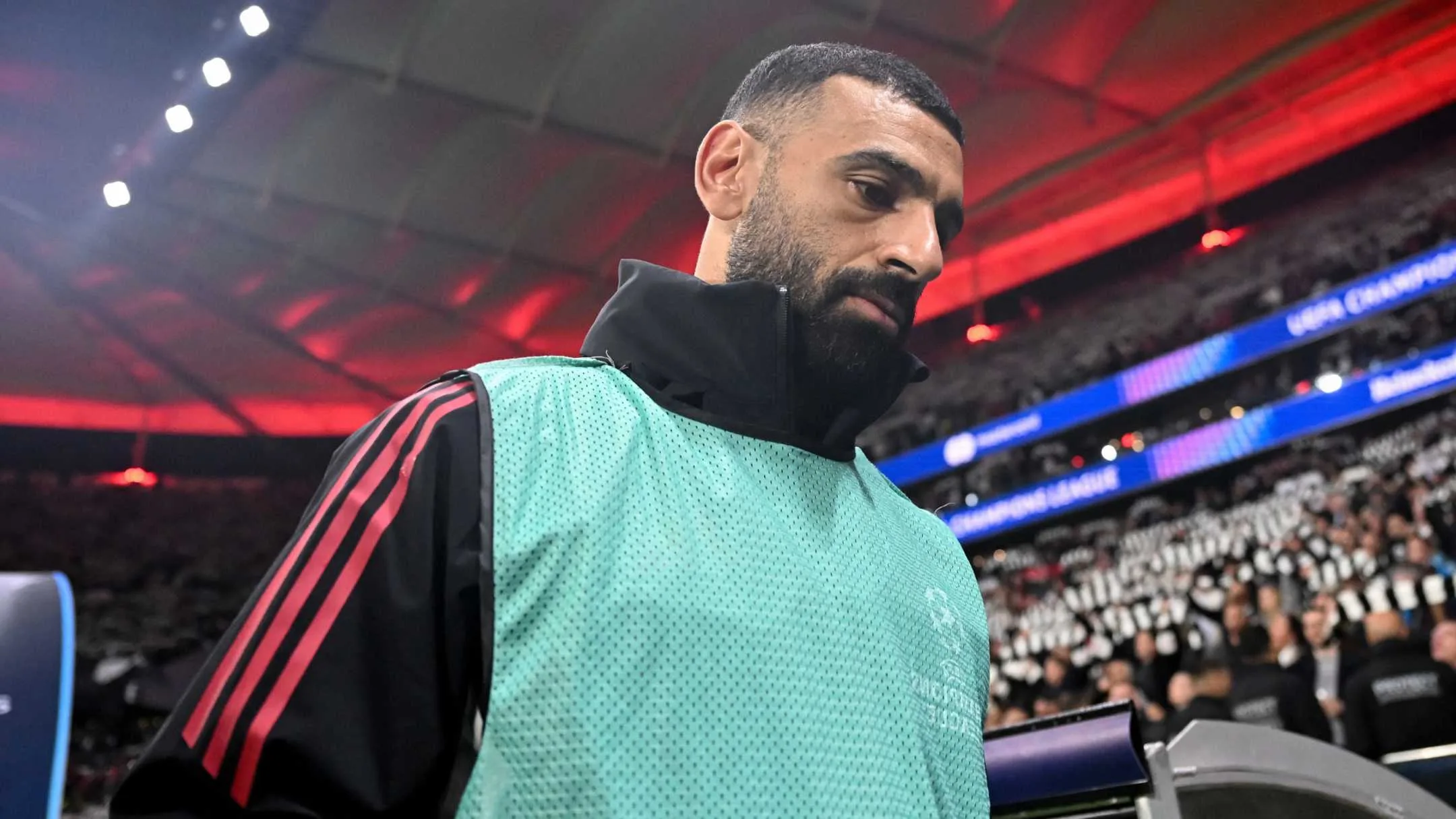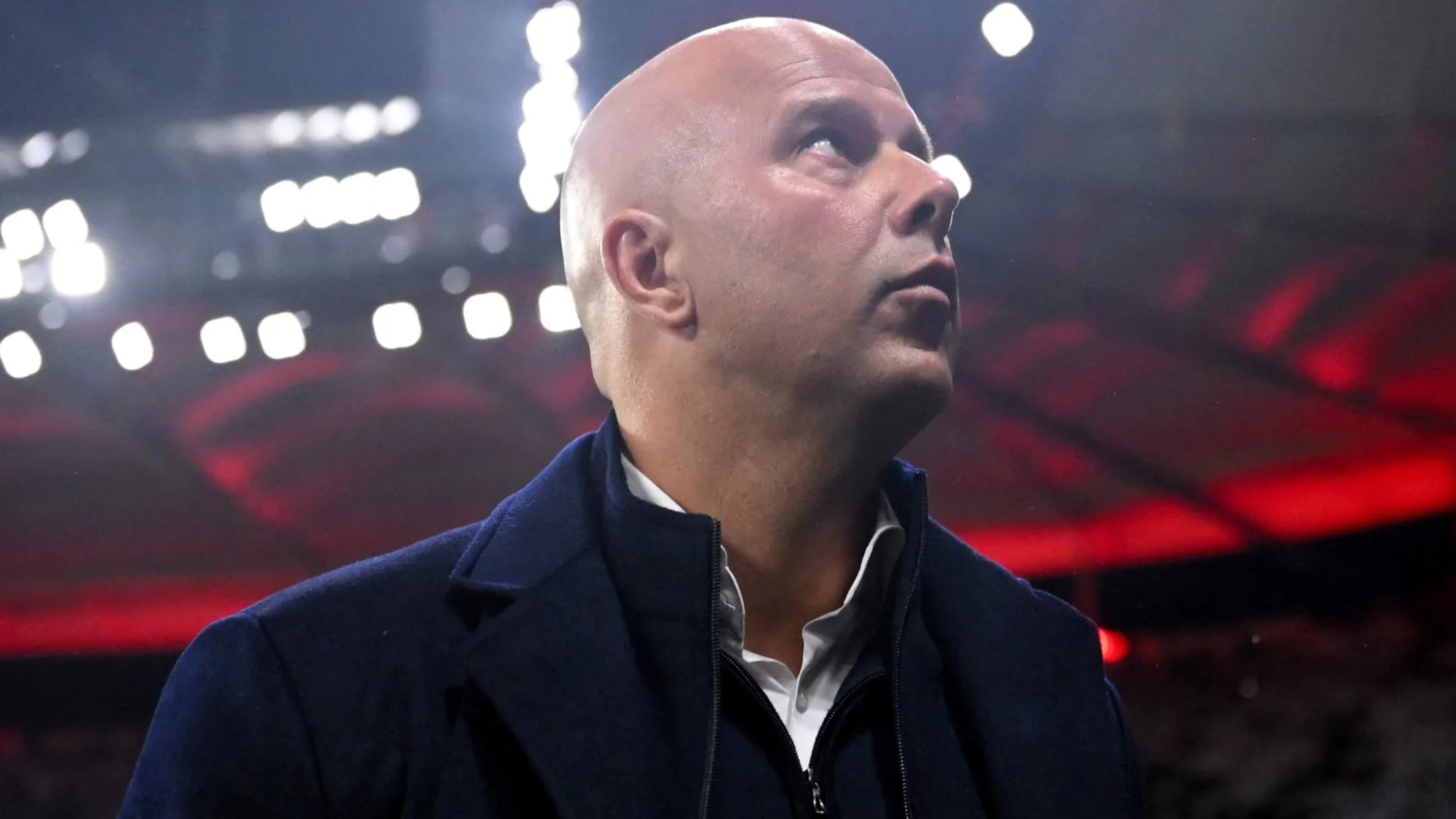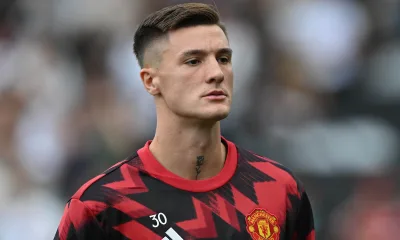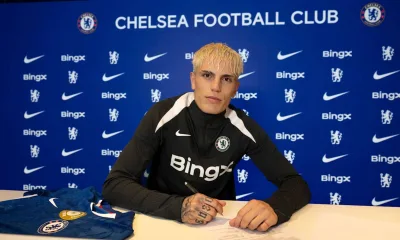Analytics & Stats
Salah Makes History with 10th Opening-Day Premier League Goal at Anfield
Salah reached 10 opening-day Premier League goals with a late strike at Anfield.

Mohamed Salah became the first player in Premier League history to reach double-digit opening-day goals with a late second-half strike against Bournemouth. The goal moved Salah from nine opening-day goals to ten, placing him clear at the top of the competition’s opening-day scoring list.
The published ranking lists Salah on 10, with Wayne Rooney, Alan Shearer, Jamie Vardy and Frank Lampard each on eight. Sergio Agüero and Teddy Sheringham sit on seven, Didier Drogba and Louis Saha have six, and Erling Haaland is recorded with five, alongside nine other players tied on that total.
Salah also matched Sergio Agüero for the second-most Premier League goals at a single venue. Agüero achieved his total at the Ethiad Stadium while Salah’s haul at Anfield moved him level with the Argentine. The only player ahead in that specific all-time venue list is Thierry Henry, who scored 114 goals at Highbury.
The match itself was frenetic. Liverpool raced into a two-goal lead in a game that featured handball controversy and delays amid player reports of racial abuse. Antoine Semenyo brought Bournemouth back to level terms with two standout goals. Chiesa scored late to retake the lead before Salah finished the scoring with the decisive strike.
After the final whistle Salah was seen applauding fans in the Kop in tears on an emotional evening in which supporters celebrated the life of the late Diogo Jota. Liverpool were not at their best, but the win delivered three points as the club’s title defence continued.
Analytics & Stats
Slot: Why Salah’s 2025/26 Slump May Trace Back to Alexander-Arnold’s Exit
Slot links Alexander-Arnold exit to Salah’s dip in form, urging new connections and goals. this year

Arne Slot has suggested a clear link between Liverpool’s summer changes and Mohamed Salah’s sharp reduction in attacking output this season. Salah arrives at Saturday’s trip to Brentford without a non-penalty goal in any of his previous seven Premier League appearances, the worst run of his Liverpool career, per Opta.
Opponents have openly targeted the winger, sensing he is less likely to track back and that Liverpool are less dangerous in transition. When asked whether the absence of Trent Alexander-Arnold, who left Liverpool for Real Madrid in June, had affected Salah, Slot offered a cautious acknowledgement. “Maybe his whole Liverpool [career] he played with Trent, so it could [be that],” he said. “But he’s been in promising positions often enough to score goals, maybe with Trent even more. But in general, if you have quite a few changes in the summer you have to find new connections. Mo is no exception to this.”
Every key attacking metric for Salah has declined from 2024–25 to 2025–26: goals (0.77 to 0.25), xG (0.68 to 0.30), shots (3.46 to 1.89), shots on target (1.64 to 0.76), touches in the opposition box (10.5 to 6.2), assists (0.48 to 0.25) and chances created (2.37 to 2.02). Stats provided by Opta. Correct as of Oct. 24, 2025.
Last season Alexander-Arnold delivered 147 line-breaking passes to Salah in the Premier League, a total that outstripped any other pairing in the division. Without that supply, Salah has struggled to forge a consistent rapport with a rotating line of right-backs this term.
Slot remains confident in Salah’s quality. “The way he trains, and when we do finishing drills, you cannot lose that,” he insisted. “The only thing is we have to keep bringing him into those positions and he has to bring himself into those positions.
Benchings in Europe have been a recent development. After a limp defeat to Galatasaray at the end of September, Liverpool produced a new-look frontline and romped to a 5–1 win over Eintracht Frankfurt with Cody Gakpo and Florian Wirtz flanking an Ekitiké-Alexander Isak double act. Slot said Salah was unhappy at being left out but viewed that reaction positively. “I hope he is not ever going to take it well, because the moment you are going to take it well then you miss the fire,” he argued.
Analytics & Stats
Arsenal’s defence threatens historic Liverpool and Chelsea records after perfect start
Arsenal have conceded three goals in eight Premier League games, and are chasing defensive records.

Arsenal have led the Premier League’s meanest defence in each of the last two seasons, yet that superiority has not been enough to secure the title. The club is still searching for a first Premier League crown since the 2003–04 Invincibles campaign, a drought now extending beyond two decades and noted as the longest since their post-1919 promotion era.
After eight games of the 2025–26 season Arsenal sit top of the table. They have won six fixtures and dropped five points from the 24 available so far. What stands out is the goals-against column. Manchester City (17) and Chelsea (16) have marginally outscored Arsenal (15), while Liverpool, Bournemouth and Tottenham Hotspur have netted just once less often. More telling is how rarely Arsenal have been scored against.
The Gunners’ backline has been breached only three times in the league to date, an average of 0.375 goals conceded per game. That figure is lower than two landmark English defensive records. Highlighted by The Times, Liverpool’s fewest-goals-conceded season (16 in 42 games, 1978–79) works out at 0.381 per game, while Chelsea’s Premier League-era record of 15 goals conceded in 38 games in 2004–05 averages 0.395.
Arsenal still face 30 Premier League fixtures this season, so both defensive standards remain under threat over the long run. Mikel Arteta has tended to select a preferred defensive quartet of Jurriën Timber, William Saliba, Gabriel and Riccardo Calafiori, but that combination has not been available in every match. The depth of the defensive unit is evident: replacements such as Myles Lewis-Skelly and Cristhian Mosquera have been able to slot in without a visible drop in defensive performance.
The early figures position Arsenal as a team capable of challenging historic benchmarks, but maintaining this level across a full season will determine whether those records can be genuinely threatened.
Analytics & Stats
Slot doubles down on criticism of United’s long-ball approach
Slot criticised United’s long-ball approach; statistics highlighted heavier reliance on long passes.

Arne Slot confronted Manchester United’s direct approach after a match in which United prevailed by playing a higher volume of long passes. United’s opening goal came after Bruno Fernandes gobbled up a loose ball following a long punt forward. Slot did not disguise his displeasure in his post-match remarks. “It’s always difficult playing against a team that plays a low block and long balls,” Slot sniped after the 2–1 defeat . “It’s even more difficult when you concede a goal in the opening minutes with a man lying on the ground.
“When you play United, with all their talented players, and they’re playing a low block at our home and playing long balls, the last thing you want is to go behind because it gives them even more confidence,” Slot later added, the bitterness dripping off his words.
Slot also pointed to the difference in playing style compared with recent opponents. “The biggest exception for me was, today compared to the other games we’ve played, was the playing style of our opponent,” Slot explained, the smile back on his face after the end of a four-game losing streak.
The statistical contrast was stark. According to FBref, Manchester United attempted 91 long passes compared with 58 by Eintracht Frankfurt; 28 percent of United’s pass attempts were long, versus 15 percent for Frankfurt. United conceded one goal and allowed six shots on target; Frankfurt conceded five and faced 14 shots on target. The report also notes Eintracht Frankfurt were less reliant upon long balls but were thumped 5–1.
Belgian goalkeeper Lammens became the focal point for United’s direct plan. Of the 47 passes he attempted on Sunday, 45 travelled at least 30 yards. He explained the rationale succinctly. “You have to be realistic,” Lammens reflected.
“They [Liverpool] are going to go man vs. man [off the ball], so coming to Anfield it is quite difficult to build up.
“So, we made the decision that we should get more of a long ball and try to win the second ball, even though we didn’t really have a target striker. We did it quite well, so that’s how we could still push them away.”
















